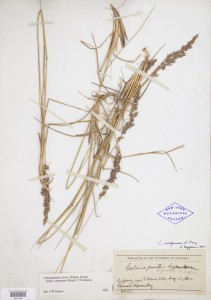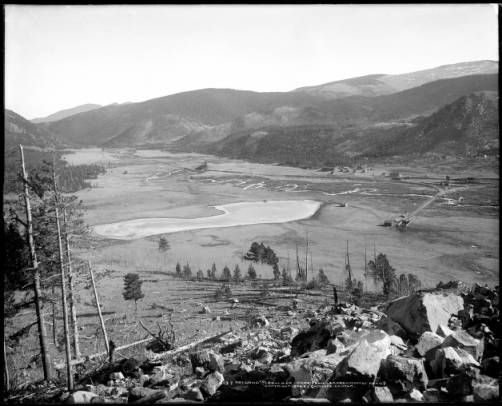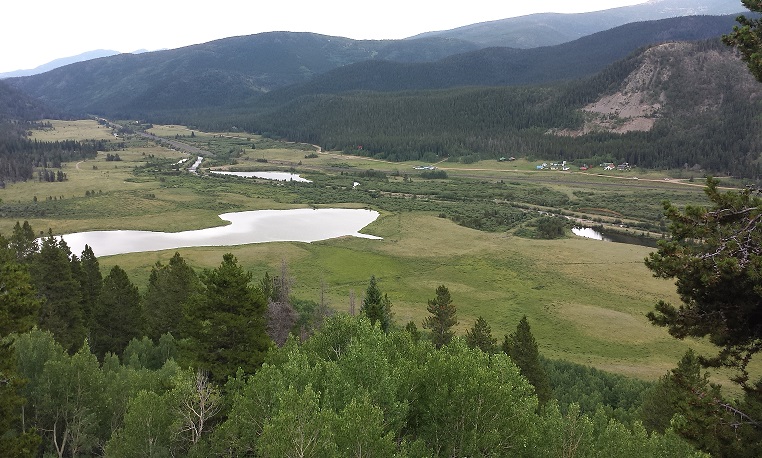Full Circle—From the Rockies to the Bronx and Back
Posted in Interesting Plant Stories on February 5, 2015 by Jonathan Toll
Jonathan W. Toll is a Project Manager for The William and Lynda Steere Herbarium. He is currently involved with the Great Lakes Invasives project, a multi-institutional effort that focuses on digitizing non-indigenous and related species of vascular plants, green algae, fish, and mollusks in the Great Lakes Basin.

While cataloguing herbarium specimens for a large, multi-institutional project last year, I came across a particular specimen, Calmagrostis neglecta, that caught my eye. This species is a perennial grass that ranges throughout the northern United States; it is usually found in wetlands but can also occur in non-wetland areas. What stood out for me was a phrase on the specimen label: “Ragtown, near Tolland, Colo. Aug. 22, 1912. Francis Ramaley.”
I briefly visited Tolland in 2009, and when I came across the specimen, I was planning on going there again. My dad had been there countless weekends, so I emailed him to tell him about the specimen label. He replied with another fascinating nugget of information. “I wonder if Margaret Ramaley is somehow related to Francis Ramaley,” he wrote. “She is still in Tolland last time I heard”. With that as background, I flew into Denver’s airport at the end of last July and drove into the Rockies.
Tolland, formerly known as Mammoth Gulch, was renamed around 1904 after my relative Katherine Wolcott Toll’s ancestral home in Tolland, England. The Toll family name was no doubt a coincidence. The town became a scenic stop for tourists, and a railroad company began to run excursion trains to it. By 1925, it had a year-round population of 250, but due to the construction of the nearby Moffat Tunnel, the frequency of trains diminished and the town’s fortunes began to decline. In addition, fires, especially one in 1955, destroyed much of the town. Today, Tolland feels like a shell of its past. There is no train station, and the main road has a dozen or so restored cabins and vacation residences with seasonal occupants.

A day after arriving, I climbed the front porch of the Ramaley cabin and knocked on the door. After a few barks from her dog, whose name I learned was Chance, Margaret came out and gave me a warm welcome. I invited her over for lunch, and after chatting for a bit I asked her if she was related to Francis Ramaley. “Oh yeah, I’m his granddaughter!” This is a small world.
Francis Ramaley, a botanist, was a professor at the University of Colorado from 1900 through 1939. Drawn by the local plant diversity and by Tolland’s easy rail access, Ramaley got the university to build the Mountain Laboratory of Field Biology in 1908. For many years, field courses were conducted there every summer. Today the station has been renamed the Mountain Research Station (MRS). During his career at the university, Ramaley was also, at one point or another, acting president of the university, acting dean of the College of Pharmacy, and acting dean of the Graduate School. The university’s biology building is named for him.

One hundred and two years after Ramaley collected the Calmagrostis neglecta specimen, the valley is still teeming with the plant diversity that drew him to the area in the first place. It was wonderful to walk through the grassy fields and speculate about where he found the specimen. As I wandered, one fact stood out for me. This dried, pressed specimen is a piece of history of the valley’s plant life, just as the shell of Tolland is a piece of history for Margaret Ramaley and me in this valley.

